Today’s global economy relies on international shipping to transport goods from shore to shore.
As such, international regulation has helped bridge the gap between nations to create a worldwide standard for best shipping practices.
The Convention for Safe Containers (CSC) mandates the application of metal data plates on every shipping container.
Simply fill out our contact form or give us a call at (800) 428-0095
Overview
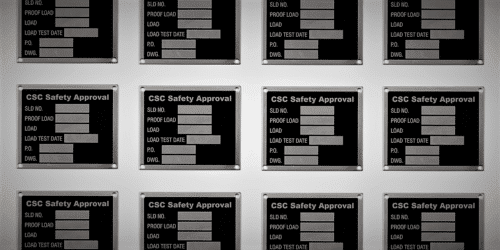 A CSC plate is a durable metal plate permanently affixed to shipping containers. Typically made of aluminum or stainless steel, these plates contain crucial safety and inspection data, including approval references, identification numbers, and maximum stacking weights. They are positioned on the container’s door to provide a clear, standardized compliance record with international container safety standards.
A CSC plate is a durable metal plate permanently affixed to shipping containers. Typically made of aluminum or stainless steel, these plates contain crucial safety and inspection data, including approval references, identification numbers, and maximum stacking weights. They are positioned on the container’s door to provide a clear, standardized compliance record with international container safety standards.
Benefits
Purpose of a CSC Plate
The primary purpose of a CSC plate is to verify that a container meets global safety regulations for transport and handling. It confirms the container’s structural integrity, ensuring it is fit for stacking, lifting, and shipment. CSC plates also aid customs and port authorities by providing a quick way to validate the container’s legitimacy and compliance. In addition, they help safeguard logistics teams, shipping companies, and cargo from structural failures or non-compliant units.
Applications
Who Needs a CSC Plate?
Shipping container manufacturers, freight forwarders, and leasing companies must use these plates. Businesses that own or modify containers for export must also ensure a valid CSC plate is attached to their shipments. Compliance facilitates smooth transport and prevents costly delays and penalties during inspection.
CSC plates must comply with specific regulations and standards to ensure global uniformity and safety in container transport. These guidelines, established by international governing bodies, outline the technical requirements for container design, testing, and inspection. Understanding these regulations is essential for maintaining compliance and avoiding costly shipping disruptions.
Regulation/Standards
IMO (International Maritime Organization)
In the early 1970’s, freight shipping internationally became more and more prevalent as the global economy grew. The United Nations tasked IMO with creating and enforcing regulation for international shipping.
The intention was to provide standardized practices for all nations engaging in international transport and shipping. This would in effect reduce red tape and confusion and benefit all parties.
The 1972 Convention for Safe Containers
The regulation that IMO enacted is called the Convention for Safe Containers (CSC). Its goals were to provide higher levels of container safety, as well as maintain uniform procedures.
Shipping Container Plates
CSC Plates
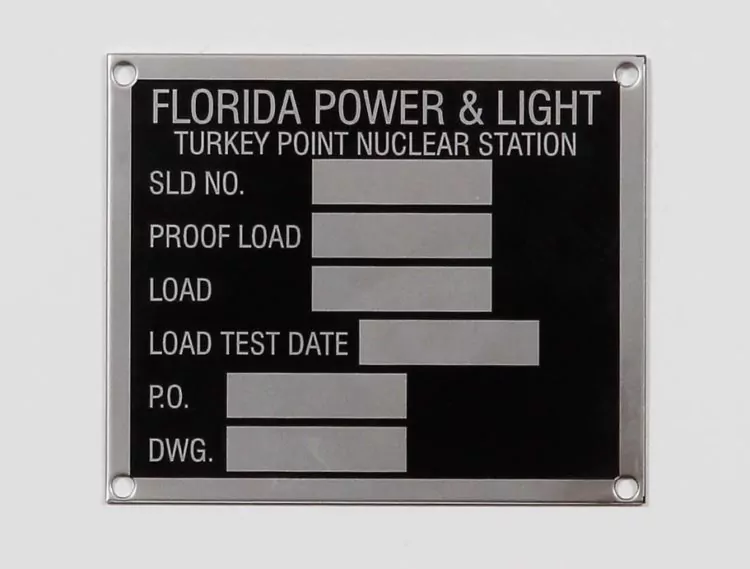 One of the main requirements outlined in the CSC guidelines is the application of custom data plates to every shipping container. Note that only containers actively used for shipping need to be marked with a CSC plate.
One of the main requirements outlined in the CSC guidelines is the application of custom data plates to every shipping container. Note that only containers actively used for shipping need to be marked with a CSC plate.
It specifically calls for a fireproof rectangular plate measuring at least 200mm x 100mm. It is required to be a permanent marking solution and must also be fireproof and resistant to corrosion.
Information on the tag must be durable enough to hold up to the environmental conditions. The CSC guidelines mention stamping and embossing as two potential marking solutions.
In addition, the metal plate must stand out from the shipping container with a contrasting color. They typically utilize the natural silver color of metal to contrast with the shipping crate.
The tag is required to say “CSC Safety Approval” with a minimum character size of 8mm. All other data on the tag must be at least 5mm.
Combined Data Plates
Outside of just the CSC regulations, there are other standards as well. Instead of trying to create and attach multiple metal data plates, information is often combined into one large plate.
This will often include the CSC plate, customs info, manufacturer info, safety labeling, or any other relevant data.
These information plates are typically referred to as combined data plates.
Proper identification is vital in ensuring inspections and processing goes as quickly and smoothly as possible.
Plate Information
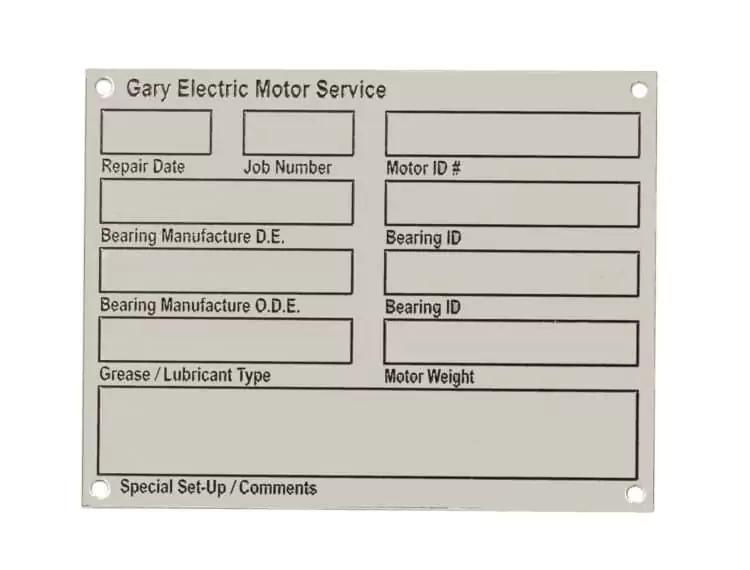 Information required to be present on the data plate may vary by region, or change with new regulation. Some of the most commonly used information includes:
Information required to be present on the data plate may vary by region, or change with new regulation. Some of the most commonly used information includes:
- Manufacturer’s info
- Country of approval
- Identification number
- Date of manufacture
- Weight capacity
- Stacking capabilities and racking test load values
This data provides inspectors and workers all the information they need to safely and accurately transport and collect containers across language barriers and borderlines.
Durability
Durability is one of the most important elements for shipping. Ensuring that containers and their parts are able to withstand the constant use keeps not only the product protected, but helps prevent injury to workers.
Shipping containers are exposed to a wide range of environmental conditions. From rapidly changing weather, wear and tear from use, and potential exposure to salt water.
Not only do the containers themselves have to be able to withstand these conditions, but so do the identification plates mounted on them.
CSC data plates are designed specifically as a long-lasting solution, even in the tough shipping conditions.
Materials
Some of the most common materials used for shipping container identification includes:
These metal substrates provide the best durability and visibility for shipping identification.
Processes
Photo Anodization
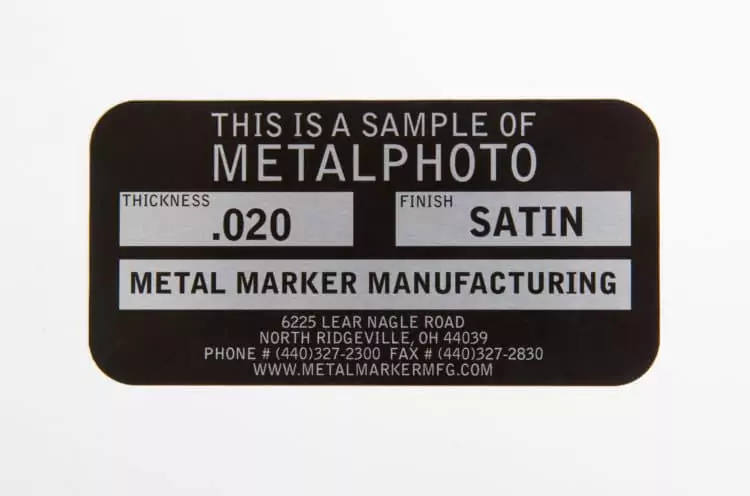 The most commonly used process for CSC and combined data plates is the photo anodization process. It’s as if it was tailor made for the shipping application: a highly durable solution, which provides custom information and easy readability.
The most commonly used process for CSC and combined data plates is the photo anodization process. It’s as if it was tailor made for the shipping application: a highly durable solution, which provides custom information and easy readability.
These plates are rated for 20+ year outdoor durability. The black design is directly embedded into layers of an anodized aluminum substrate. This ensures the data will not simply be removed in inclement conditions.
Any information, designs, or logos can be added to these nameplates. Making a combined data plate with special data and a manufacturer’s logo is no problem.
In addition, the black on silver appearance makes the information contrast very well from any shipping container.
Stamping/Embossing
The Convention for Safe Containers guidelines specify that the identification tags must be permanent, and information may be embossed or stamped.
These processes are relied upon to provide long-lasting marking for a slew of industries. Stamping indents the characters, while embossing raises the information.
Embossing and stamping are a more viable option if you are only producing a small CSC plate on its own. Larger combined data plates are best suited for photo anodization.
There are some benefits these processes offer. For example, if an embossed tag is painted over, it will still remain legible. However, the data and size limitations restrict these processes from being as usable for this application.
Another benefit is the ability to mark your own plates in-house. An embossing machine or similar tool allows for your data to be marked as you need it. Flat blank tags are used for these machines.
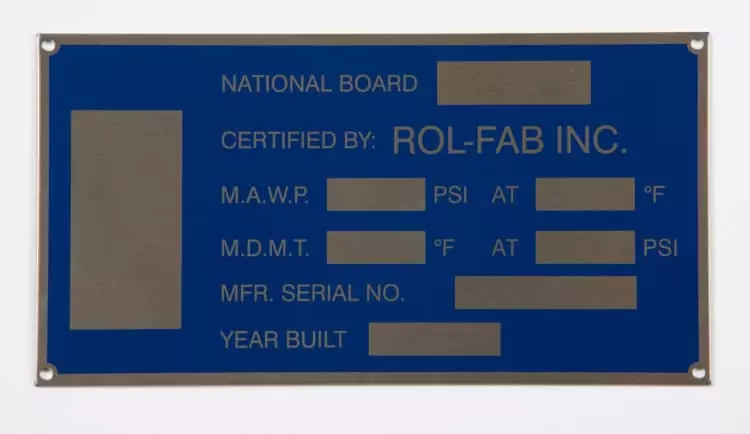
Attachment
The last thing to consider with metal identification plates is attachment. CSC and combined plates are required to be permanently attached. The industry standard is to rivet or bolt the plate on with screws.
A hole cut into each corner of the plate allows for easy mounting on the container. They are most commonly affixed on the lower left side of the container doors.
Wrap-Up
Creating an international standard for shipping has allowed for international commerce to excel. By setting forth clear and reasonable standards, the IMO has allowed for safety to stay at the forefront. In addition, less red tape and easier inspections means countries can trade quicker, more efficiently, and more effectively.
If you are looking for a durable and long lasting option for your shipping identification needs, consider Metal Marker CSC plates. Our team can work with you to create the perfect solution for your business, ensuring that your assets are properly labeled and follow IMO standards. Contact us today to learn more about our products – we would be happy to help.
Testimonials
You’re not gonna find a better company when it comes to knowledge in the label/marker field. Metal marker is extremely responsive and truly cares about their customers and goes out of their way to get their customers exactly what they’re looking for, Every Time!
Metal Marker was fantastic at explaining options, costs and work with our design needs, the items arrived sooner than expected and each plate was protected with a film, the tape is very strong and we hope it last for a long time as the plate goes on the rim of the main door, is our branding.
The Metal Marker team is amazingly patient and got us exactly what we were needing.
Tags Look Great, exactly what we were looking for
Easy to work with Metal Marker. They are organized and delivered product with high quality.
Great products every time! Great customer service!
Everything is great ! good service, and customer service.
I’m very impressed with everything that you guys do and I’ve been very pleased with the projects that we’ve worked on. Count on me to be in touch with you on any upcoming projects that are moving forward.
The Metal Marker Advantage
We work with you closely to deliver high-quality tags that fulfill your expectations. And we’re honest when something is infeasible or impractical. We’ll propose an alternative solution that satisfies your requirements, budget, and timeline.











